There are essential and non-essential
amino-acids.
An essential amino acid or indispensable amino acid
is an amino
acid that cannot be synthesized by the organism (usually referring to
humans), and therefore must be supplied in the diet.
|
Essential
amino-acids
|
|
Isoleucine
|
|
Leucine
|
|
Lysine
|
|
Methionine
|
|
Phenylalanine
|
|
Threonine
|
|
Tryptophan
|
|
Valine
|
|
Histidine
|
The amino acids regarded as essential for humans are phenylalanine,
valine, threonine, tryptophan,
isoleucine,
methionine,
leucine, lysine, and histidine. Additionally, cysteine (or
sulphur-containing amino acids), tyrosine (or aromatic amino acids), and arginine are
required by infants and growing children. Essential amino acids are
"essential" not because they are more important to life than the
others, but because the body does not synthesize them, making it essential to
include them in one's diet in order to obtain them. In addition, the amino
acids arginine,
cysteine, glycine, glutamine, histidine, proline, serine and tyrosine are
considered conditionally essential, meaning they are not normally
required in the diet, but must be supplied exogenously to specific populations
that do not synthesize it in adequate amounts.
Isoleucine
Isoleucine (abbreviated as Ile
or I) is an α-amino acid with the chemical
formula HO2CCH(NH2)CH(CH3)CH2CH3.
It is an essential amino acid, which means that humans
cannot synthesize it, so it must be ingested.
Even though this amino acid is not produced in animals, it is
stored in high quantities. Foods that have high amounts of isoleucine include
eggs, soy protein, seaweed, turkey, chicken, lamb, cheese, and fish.
Leucine
Leucine (abbreviated as Leu or L) is a branched-chain α-amino acid
with the chemical formula HO2CCH(NH2)CH2CH(CH3)2.
|
Food
|
g/100g
|
|
Soy protein concentrate
|
4.917
|
|
Soybeans, mature seeds, raw
|
2.97
|
|
Beef, round, top round, separable lean
and fat
|
1.76
|
|
Peanuts
|
1.672
|
|
Salami, Italian, pork
|
1.63
|
|
Fish, salmon, pink, raw
|
1.62
|
|
Wheat germ
|
1.571
|
|
Almonds
|
1.488
|
|
Chicken, broilers or fryers, thigh, meat
only, raw
|
1.48
|
|
Chicken egg, yolk, raw, fresh
|
1.40
|
|
Oat
|
1.284
|
|
Beans, pinto, cooked
|
0.765
|
|
Lentils, cooked
|
0.654
|
|
Chickpea, cooked
|
0.631
|
|
Corn, yellow
|
0.348
|
|
Cow milk, whole, 3,25% fat
|
0.27
|
|
Rice, brown, medium-grain, cooked
|
0.191
|
|
Milk, human, mature, fluid
|
0.10
|
Lysine
Lysine (abbreviated as Lys or K)
is an α-amino
acid with the chemical formula HO2CCH(NH2)(CH2)4NH2.
It is an essential amino acid, which means that the
human body cannot synthesize it.
The nutritional
requirement per day, in milligrams of lysine per kilogram of body weight,
is: infants (3–4 months) 103, children (2 years) 64, older children (10–12
years) 60 to 44, adults 12. For a 70 kg adult, 12 milligrams of lysine per
kilogram of body weight is 0.84 grams of lysine. Good sources of lysine
are foods rich in protein such as soy, as
well as meat
(specifically red meat, lamb, pork, and poultry), cheese (particularly Parmesan),
certain fish (such as cod and sardines), and eggs.
Lysine is the limiting amino acid (the essential amino acid
found in the smallest quantity in the particular foodstuff) in most cereal
grains, but is plentiful in most pulses
(legumes). Consequently, meals that combine cereal grains and legumes, such as
the Indian
dal with rice, Middle Eastern hummus, ful medames,
falafelpita bread,
the Mexican beans with rice or tortilla have
arisen to provide complete protein in diets that are, by choice or
by necessity, vegetarian. with A food is considered to have sufficient
lysine if it has at least 51 mg of lysine per gram of protein (so that the
protein is 5.1% lysine).
Foods containing
significant amounts of lysine include:
- Catfish, channel, farmed, raw: 9.19% of the protein is lysine.
- Chicken, roasting, meat and skin, cooked, roasted: 8.11% of the protein is lysine.
- Beef, ground, 90% lean/10% fat, cooked: 8.31% of the protein is lysine.
- Soybean, mature seeds, raw: 7.42% of the protein is lysine.
- Soybean, mature seeds, sprouts: 5.74% of the protein is lysine (sprouting decreases the lysine content).
- Winged Bean (aka Goa Bean or Asparagus Pea), mature seeds, raw: 7.20% of the protein is lysine.
- Lentil, pink, raw: 6.97% of the protein is lysine.
- Lentil, sprouts, raw: 7.95% of the protein is lysine (sprouting increases the lysine content).
- Parmesan cheese, grated: 7.75% of the protein is lysine.
- Azuki bean (adzuki beans), mature seeds, raw: 7.53% of the protein is lysine.
- Milk, non-fat: 7.48% of the protein is lysine.
- Egg (food), whole, raw: 7.27% of the protein is lysine.
- Pea, split, mature seeds, raw: 7.22% of the protein is lysine.
- Kidney Bean, mature seeds, raw: 6.87% of the protein is lysine.
- Chickpea, (garbanzo beans, Bengal gram), mature seeds, raw: 6.69% of the protein is lysine.
- Navy Bean, mature seeds, raw: 5.73% of the protein is lysine.
- Amaranth, grain, uncooked: 5.17% of the protein is lysine.
Methionine
Methionine (abbreviated as Met
or M) is an α-amino acid with the chemical
formula HO2CCH(NH2)CH2CH2SCH3.
This essential amino acid is classified as nonpolar.
High levels of
methionine can be found in eggs, sesame seeds, Brazil nuts, fish, meats and
some other plant seeds; methionine is also found in cereal grains. Most
fruits and vegetables contain very little of it. Most legumes are also
low in methionine. The complement of cereal (methionine)
and legumes (lysine),
providing a complete protein is a classic combination, found
throughout the world, such as in rice
and beans or tortilla and beans.
Racemic methionine
is sometimes added as an ingredient to pet foods.
|
Food
|
g/100g
|
|
Egg, white, dried, powder, glucose
reduced
|
3.204
|
|
Sesame seeds flour(low fat)
|
1.656
|
|
Egg, whole, dried
|
1.477
|
|
Cheese, parmesan, shreeded
|
1.114
|
|
Brazil nuts
|
1.008
|
|
Soy protein concentrate
|
0.814
|
|
Chicken, broilers or fryers, roasted
|
0.801
|
|
Fish, tuna, light, canned in water,
drained solids
|
0.755
|
|
Beef, cured, dried
|
0.749
|
|
Bacon
|
0.593
|
|
Beef, ground, 95% lean meat/ 5% fat, raw
|
0.565
|
|
Pork, ground, 96% lean/ 4% fat, raw
|
0.564
|
|
Wheat germ
|
0.456
|
|
Oat
|
0.312
|
|
Peanut
|
0.309
|
|
Chickpea
|
0.253
|
|
Corn, yellow
|
0.197
|
|
Almonds
|
0.151
|
|
Beans, pinto, cooked
|
0.117
|
|
Lentils, cooked
|
0.077
|
|
Rice, brown, medium-grain, cooked
|
0.052
|
Phenylalanine
Phenylalanine (abbreviated as Phe
or F) is an α-amino acid with the formula
C6H5CH2CH(NH2)COOH. This essential amino acid is classified as nonpolar
because of the hydrophobic nature of the benzyl side chain.
Phenylalanine is found naturally in the breast milk of mammals.
It is used in the manufacture of food and drink products and sold as a nutritional
supplement for its reputed analgesic and antidepressant
effects. It is a direct precursor to the neuromodulator phenylethylamine,
a commonly used dietary supplement.
Threonine
Threonine (abbreviated as Thr
or T) is an α-amino acid with the chemical
formula HO2CCH(NH2)CH(OH)CH3.
Foods high in threonine include cottage
cheese, poultry,
fish, meat, lentils, and sesame
seeds.
Tryptophan
Tryptophan (IUPAC-IUBMB abbreviation: Trp
or W; IUPAC abbreviation: L-Trp or D-Trp; sold for medical use as Tryptan)
is one of the 20 standard amino acids, as well as an essential amino acid in the human diet.
For many organisms
(including humans), tryptophan is an essential amino acid. This means that it
cannot be synthesized by the organism and therefore must be part of its diet.
Amino acids, including tryptophan, act as building blocks in protein biosynthesis. In addition, tryptophan
functions as a biochemical precursor for the following compounds (see
also figure to the right):
- Serotonin (a neurotransmitter), synthesized via tryptophan hydroxylase. Serotonin, in turn, can be converted to melatonin (a neurohormone), via N-acetyltransferase and 5-hydroxyindole-O-methyltransferase activities.
- Niacin is synthesized from tryptophan via kynurenine and quinolinic acids as key biosynthetic intermediates.
- Auxin (a phytohormone) when sieve tube elements undergo apoptosis tryptophan is converted to auxins.
|
Food
|
Protein(g/100g)
|
Tryptophan(g/100g)
|
Tryptophan/Protein
|
|
Egg,
white, dried
|
81.10
|
1.00
|
1.23
|
|
Spirulina,
dried
|
57.47
|
0.93
|
1.62
|
|
Cod,
atlantic, dried
|
62.82
|
0.70
|
1.11
|
|
Soybeans,
raw
|
36.49
|
0.59
|
1.62
|
|
Pumpkin
seed
|
33.08
|
0.57
|
1.72
|
|
Cheese,
parmesan
|
37.90
|
0.56
|
1.47
|
|
Caribou
|
29.77
|
0.46
|
1.55
|
|
Sesame
seed
|
17.00
|
0.37
|
2.17
|
|
Cheese,
cheddar
|
24.90
|
0.32
|
1.29
|
|
Sunflower
seed
|
17.20
|
0.30
|
1.74
|
|
Pistachio
|
21.00
|
0.28
|
1.30
|
|
Cashew
|
17.00
|
0.25
|
1.47
|
|
Pork,
chop
|
19.27
|
0.25
|
1.27
|
|
|
21.89
|
0.24
|
1.11
|
|
Chicken
|
20.85
|
0.24
|
1.14
|
|
Beef
|
20.13
|
0.23
|
1.12
|
|
Salmon
|
19.84
|
0.22
|
1.12
|
|
Lamb,chop
|
18.33
|
0.21
|
1.17
|
|
Perch,
|
18.62
|
0.21
|
1.12
|
|
Almond
|
21.00
|
0.21
|
1.00
|
|
Egg
|
12.58
|
0.17
|
1.33
|
|
Wheat
flour, white
|
10.33
|
0.13
|
1.23
|
|
Baking
chocolate, unsweetened
|
12.90
|
0.13
|
1.23
|
|
Milk
|
3.22
|
0.08
|
2.34
|
|
Rice,
white
|
7.13
|
0.08
|
1.16
|
|
Oatmeal,
cooked
|
2.54
|
0.04
|
1.16
|
|
Potatoes,
russet
|
2.14
|
0.02
|
0.84
|
|
Banana
|
1.03
|
0.01
|
0.87
|
The disorders fructose malabsorption and lactose intolerance cause improper absorption
of tryptophan in the intestine, reduced levels of tryptophan in the blood and
depression.
Tryptophan is a
routine constituent of most protein-based foods or dietary proteins. It is
particularly plentiful in chocolate, oats, dried dates, milk, yogurt, cottage cheese, red meat, eggs,
fish, poultry, sesame, chickpeas, sunflower
seeds, pumpkin seeds, corn, spirulina, bananas, and peanuts. Despite
popular belief that turkey has a particularly high amount of tryptophan,
the amount of tryptophan in turkey is typical of most poultry.
Valine
Valine
(abbreviated as Val or V) is an α-amino acid
with the chemical formula HO2CCH(NH2)CH(CH3)2.
Along with leucine and isoleucine,
valine is a branched-chain amino acid. It is named
after the plant valerian. In sickle-cell disease, valine substitutes for the
hydrophilic
amino acid
glutamic
acid in hemoglobin.
Because valine is hydrophobic, the hemoglobin is prone to abnormal
aggregation.
Valine is an
essential amino acid, hence it must be ingested, usually as a component of proteins. It is synthesized in plants via several steps starting from pyruvic
acid. The initial part of the pathway also leads to leucine.




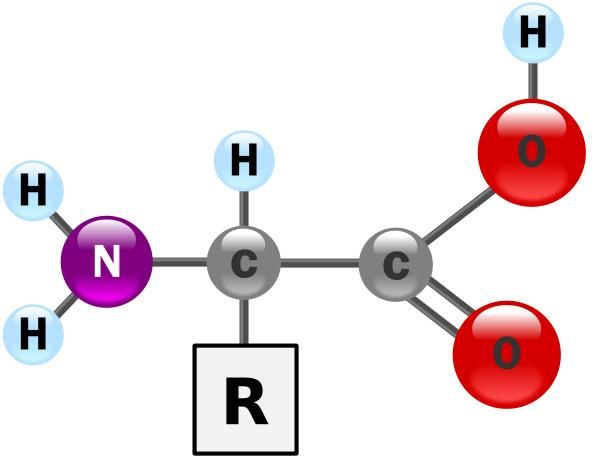
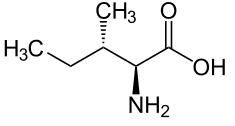
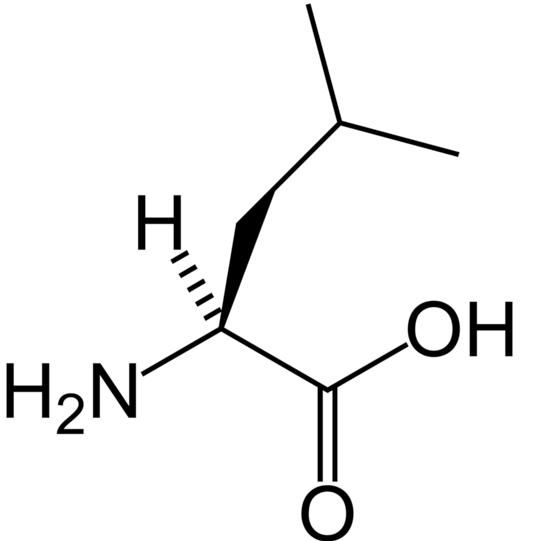
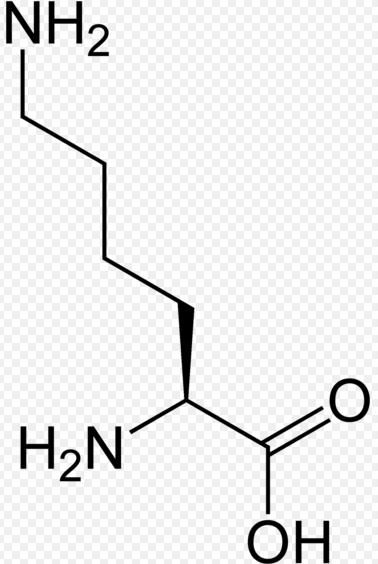
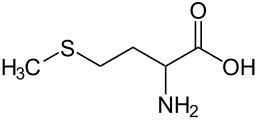
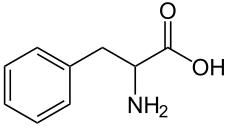
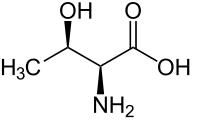

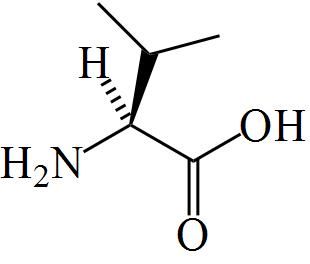





1 коментара:
Thanks for sharing information about amino acids bodybuilding. Your blog is very appreciable and informational. Healthgenie.in offers at amino acids bodybuilding, weighing scales, best protein powder products with heavy discount.
Постави коментар